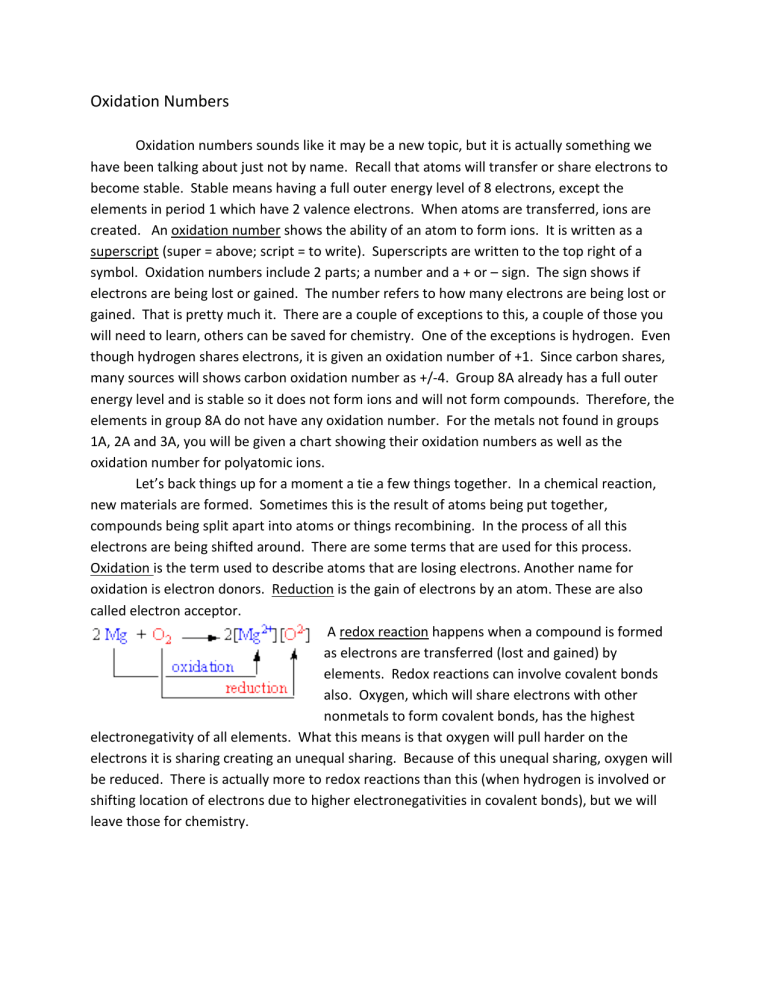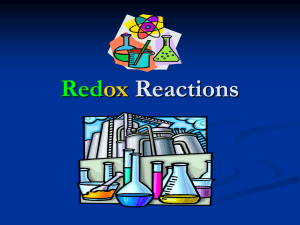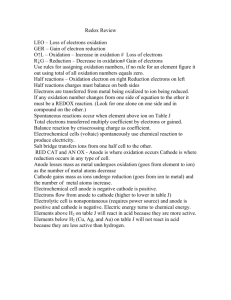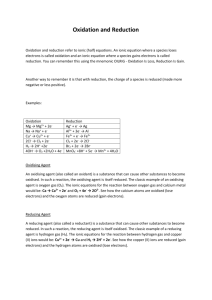Oxidation Numbers

Oxidation Numbers
Oxidation numbers sounds like it may be a new topic, but it is actually something we have been talking about just not by name. Recall that atoms will transfer or share electrons to become stable. Stable means having a full outer energy level of 8 electrons, except the elements in period 1 which have 2 valence electrons. When atoms are transferred, ions are created. An oxidation number shows the ability of an atom to form ions. It is written as a superscript (super = above; script = to write). Superscripts are written to the top right of a symbol. Oxidation numbers include 2 parts; a number and a + or – sign. The sign shows if electrons are being lost or gained. The number refers to how many electrons are being lost or gained. That is pretty much it. There are a couple of exceptions to this, a couple of those you will need to learn, others can be saved for chemistry. One of the exceptions is hydrogen. Even though hydrogen shares electrons, it is given an oxidation number of +1. Since carbon shares, many sources will shows carbon oxidation number as +/-4. Group 8A already has a full outer energy level and is stable so it does not form ions and will not form compounds. Therefore, the elements in group 8A do not have any oxidation number. For the metals not found in groups
1A, 2A and 3A, you will be given a chart showing their oxidation numbers as well as the oxidation number for polyatomic ions.
Let’s back things up for a moment a tie a few things together. In a chemical reaction, new materials are formed. Sometimes this is the result of atoms being put together, compounds being split apart into atoms or things recombining. In the process of all this electrons are being shifted around. There are some terms that are used for this process.
Oxidation is the term used to describe atoms that are losing electrons. Another name for oxidation is electron donors. Reduction is the gain of electrons by an atom. These are also called electron acceptor.
A redox reaction happens when a compound is formed as electrons are transferred (lost and gained) by elements. Redox reactions can involve covalent bonds also. Oxygen, which will share electrons with other nonmetals to form covalent bonds, has the highest electronegativity of all elements. What this means is that oxygen will pull harder on the electrons it is sharing creating an unequal sharing. Because of this unequal sharing, oxygen will be reduced. There is actually more to redox reactions than this (when hydrogen is involved or shifting location of electrons due to higher electronegativities in covalent bonds), but we will leave those for chemistry.
Identify what is oxidized and what is reduced in each reaction.
H
2
+ 0
2
2H
2
O
Cl
2
+ 2Na 2NaCl
Ca + I
2
CaI
2
Cl
2
+ 2 NaBr 2NaCl + Br
2
Complete the table. When determining the oxidation number, carefully consider which group the element is in, whether it is likely to lose, gain or share electrons and how many, before filling in the column.
Element
Atomic
Number
# of Protons # of Electrons
# of Valence electrons
Oxidation
Number
Hydrogen
Helium
Lithium
Beryllium
Boron
Carbon
Nitrogen
Oxygen
Fluorine
Neon
Sodium
Magnesium
Aluminum
Silicon
Phosphorus
Sulfur
Chlorine
Argon
Potassium
Calcium







